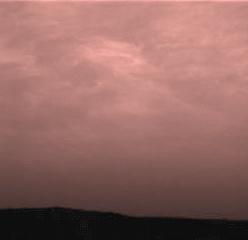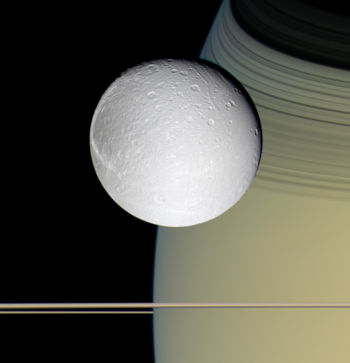Traveller's Tales
Back in the great Age of Discovery the invention of ships capable of sailing the oceans allowed adventurers to reach out beyond the insular world of Europe and find out what was out there, beyond the horizon. Among the many things they brought back to Europe were fascinating tales of alien lands and exotic creatures and entire civilisations that had no interest in, or need of, Europe - the land once thought to be the centre of the world. They brought back tales of large cities filled with gold; lands where giant birds roamed the plains; animals who carried their young in pouches on their fronts; mountains whose tops were too high to be seen; a great creature with an arm for a nose; headless humans whose faces were in their chests; mountains that perpetually blasted fire into the sky; great sea-serpents that could destroy an entire ship; sheep that grew on trees.
Eventually the entire planet was explored. Wildernesses became colonies; colonies became nations. There were no more exotic tales told of new worlds. At least, not until space travel became a reality. Now it is the spacecraft we send out that are returning the fascinating stories - stories of new worlds that boggle the imaginaton. These new explorers have returned tales of worlds with underground oceans; a world that is covered with what looks like a network of massive cobwebs; a world that is big enough to fit a thousand Earths inside and has no less than sixty-three moons; a world surrounded by massive arcs of ice; a planet that rotates on its side, so that each season lasts 42 years; a world where the sky is mustard yellow at mid-day and where Earth is the bright evening star; a world that spews sulphuric debris straight into space; a world where a day is longer than a year.
These stories come almost entirely in the form of photos. A picture is worth a thousand words, so here are a few of the stories returned from the explorers currently out there:

This is a photo of clouds on Mars, taken an hour before sunrise. These clouds are identical to the clouds we have here on Earth, but are only formed in spring, by enormous winds off the melting poles sweeping up water vapour into the atmosphere.

Mid-day on Mars. The sky is yellow on Mars during the day.

Saturn's moon Dione.

This is a truly beautiful photo. This is a portion of the Eagle Nebula, about 7,000 light years away. These three massive columns of star-forming dust are called the Pillars of Creation. They are unimaginably large - many, many times larger than our entire solar system.

Miranda - a moon that appears to be only just holding itself together.

Here are two entire galaxies colliding! The fuzzy bits around them are billions of stars being thrown out of the galaxies as a result of the collision. This collision started about 500 million years ago. The yellow spots below-left and above-right of centre are the original galaxy cores.

This is a close-up of a part of galaxy NGC 300. Each of those points of light is a star. Now think about this: Our sun and and its nearest star (Alpha Centauri) are 4.5 light years apart. That means, if they were the size of soccer balls, they would be about 7,000km apart!! There is an unimaginably massive space between them! Now look at this picture again. There are tens of thousands of stars in that photo, some behind others - so many that towards the left of the photo they start appearing as general fuzz - yet between each of those stars is a gulf at least as big as that between us and our nearest star!! In the lower right hand corner is another entire galaxy behind NGC 300, and similar to it. It is so far away from NGC 300 that it simply appears as a bright blob in the photo, yet it too is filled with billions of stars with unimaginably vast voids between them!

This galaxy is called the Black Eye Galaxy because of the dark cloud of dust to the right of the galaxy core.

This was the final shot Voyager 2 ever took of a planet in the solar system. The large crescent is Neptune, the smaller one is its largest moon, Triton. Voyagers 1 and 2 are currently leaving the solar system and entering that massive void known as interstellar space. They are the furthest from home that any explorers have ever been.
Eventually the entire planet was explored. Wildernesses became colonies; colonies became nations. There were no more exotic tales told of new worlds. At least, not until space travel became a reality. Now it is the spacecraft we send out that are returning the fascinating stories - stories of new worlds that boggle the imaginaton. These new explorers have returned tales of worlds with underground oceans; a world that is covered with what looks like a network of massive cobwebs; a world that is big enough to fit a thousand Earths inside and has no less than sixty-three moons; a world surrounded by massive arcs of ice; a planet that rotates on its side, so that each season lasts 42 years; a world where the sky is mustard yellow at mid-day and where Earth is the bright evening star; a world that spews sulphuric debris straight into space; a world where a day is longer than a year.
These stories come almost entirely in the form of photos. A picture is worth a thousand words, so here are a few of the stories returned from the explorers currently out there:

This is a photo of clouds on Mars, taken an hour before sunrise. These clouds are identical to the clouds we have here on Earth, but are only formed in spring, by enormous winds off the melting poles sweeping up water vapour into the atmosphere.

Mid-day on Mars. The sky is yellow on Mars during the day.

Saturn's moon Dione.

This is a truly beautiful photo. This is a portion of the Eagle Nebula, about 7,000 light years away. These three massive columns of star-forming dust are called the Pillars of Creation. They are unimaginably large - many, many times larger than our entire solar system.

Miranda - a moon that appears to be only just holding itself together.

Here are two entire galaxies colliding! The fuzzy bits around them are billions of stars being thrown out of the galaxies as a result of the collision. This collision started about 500 million years ago. The yellow spots below-left and above-right of centre are the original galaxy cores.

This is a close-up of a part of galaxy NGC 300. Each of those points of light is a star. Now think about this: Our sun and and its nearest star (Alpha Centauri) are 4.5 light years apart. That means, if they were the size of soccer balls, they would be about 7,000km apart!! There is an unimaginably massive space between them! Now look at this picture again. There are tens of thousands of stars in that photo, some behind others - so many that towards the left of the photo they start appearing as general fuzz - yet between each of those stars is a gulf at least as big as that between us and our nearest star!! In the lower right hand corner is another entire galaxy behind NGC 300, and similar to it. It is so far away from NGC 300 that it simply appears as a bright blob in the photo, yet it too is filled with billions of stars with unimaginably vast voids between them!

This galaxy is called the Black Eye Galaxy because of the dark cloud of dust to the right of the galaxy core.

This was the final shot Voyager 2 ever took of a planet in the solar system. The large crescent is Neptune, the smaller one is its largest moon, Triton. Voyagers 1 and 2 are currently leaving the solar system and entering that massive void known as interstellar space. They are the furthest from home that any explorers have ever been.

0 Comments:
Post a Comment
<< Home